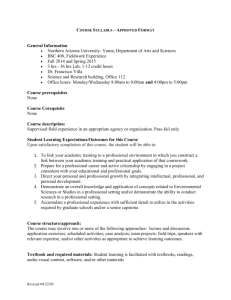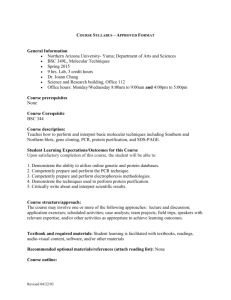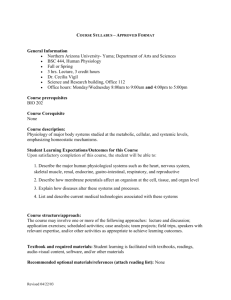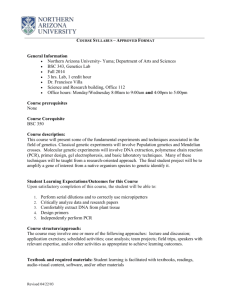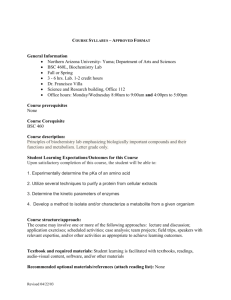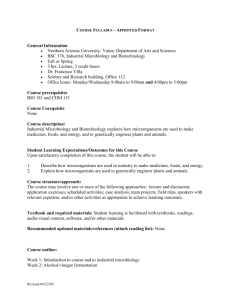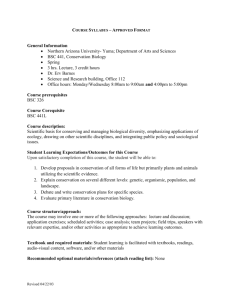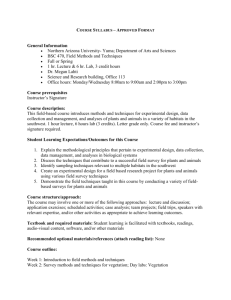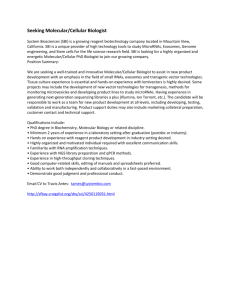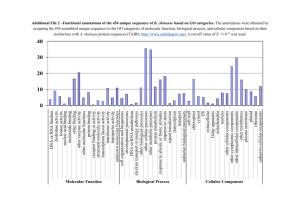BSC 344 Cellular and Molecular Biology Master Syllabus
advertisement
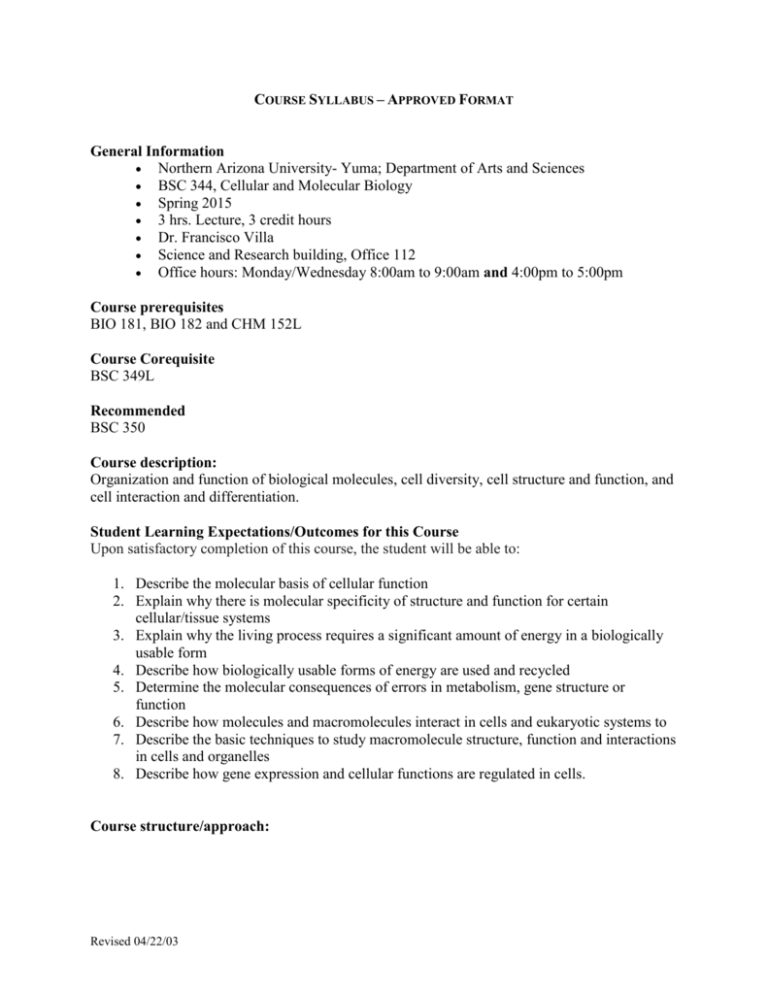
COURSE SYLLABUS – APPROVED FORMAT General Information Northern Arizona University- Yuma; Department of Arts and Sciences BSC 344, Cellular and Molecular Biology Spring 2015 3 hrs. Lecture, 3 credit hours Dr. Francisco Villa Science and Research building, Office 112 Office hours: Monday/Wednesday 8:00am to 9:00am and 4:00pm to 5:00pm Course prerequisites BIO 181, BIO 182 and CHM 152L Course Corequisite BSC 349L Recommended BSC 350 Course description: Organization and function of biological molecules, cell diversity, cell structure and function, and cell interaction and differentiation. Student Learning Expectations/Outcomes for this Course Upon satisfactory completion of this course, the student will be able to: 1. Describe the molecular basis of cellular function 2. Explain why there is molecular specificity of structure and function for certain cellular/tissue systems 3. Explain why the living process requires a significant amount of energy in a biologically usable form 4. Describe how biologically usable forms of energy are used and recycled 5. Determine the molecular consequences of errors in metabolism, gene structure or function 6. Describe how molecules and macromolecules interact in cells and eukaryotic systems to 7. Describe the basic techniques to study macromolecule structure, function and interactions in cells and organelles 8. Describe how gene expression and cellular functions are regulated in cells. Course structure/approach: Revised 04/22/03 The course may involve one or more of the following approaches: lecture and discussion; application exercises; scheduled activities; case analysis; team projects; field trips, speakers with relevant expertise, and/or other activities as appropriate to achieve learning outcomes. Textbook and required materials: Student learning is facilitated with textbooks, readings, audio-visual content, software, and/or other materials Recommended optional materials/references (attach reading list): None Course outline: Week 1: Review of the Cell, Introduction Week 2: Cell membranes Week 3: Vesicles Week 4: Golgi Apparatus Week 5: Endoplasmic Reticulum Week 6: Nucleus Week 7: Cellular Movement Week 8: Extracellular Matrix Week 9: Cell Cycle Week 10: Signal Transduction Week 11: DNA Replication Week 12: Transcription Week 13: Translation Week 14: Cancer Cells Week 15: Cell Signaling Week 16: Membrane Potentials, pH, and Energetics Assessment of Student Learning Outcomes Methods of Assessment: In-class exams, homework, in-class activities, research paper, and/or presentations. Timeline for Assessment: Over the course of the semester Grading System: Letter grades for the course will be determined based on the percentage of the total points as follows: 90-100% A Excellent 80-89% B Good 70-79% C Average 60-69% D Lowest passing <60% F Failure Revised 04/22/03 Course policy: Retests/makeup tests: No make-up exams or re-tests except for what the instructor may deem as extenuating circumstances. Attendance Policy: Under NAU Policy, students are expected to attend every session of the class in which they are enrolled. Statement on plagiarism and cheating: DON’T CHEAT! Please refer to the NAU Student Handbook policy statement on Academic Integrity. Academic honesty does not allow "plagiarism — knowingly representing the words or ideas of another as one's own" (2005, Undergraduate General Academic and Graduation Policies). If your instructor determines that you are guilty of plagiarism he deserves the right to give you a zero on the alleged assignment up to failing the course in question. All incidents regardless will be reported to the university. University policies Attach the Safe Working and Learning Environment, Students with Disabilities, Institutional Review Board, and Academic Integrity policies or reference them on the syllabus. See the following document for policy statements: http://www4.nau.edu/avpaa/UCCPolicy/plcystmt.html. Your instructor reserves the right to make any changes to the course policies, schedule, or any other aspect of the class as he sees fit. Revised 04/22/03
